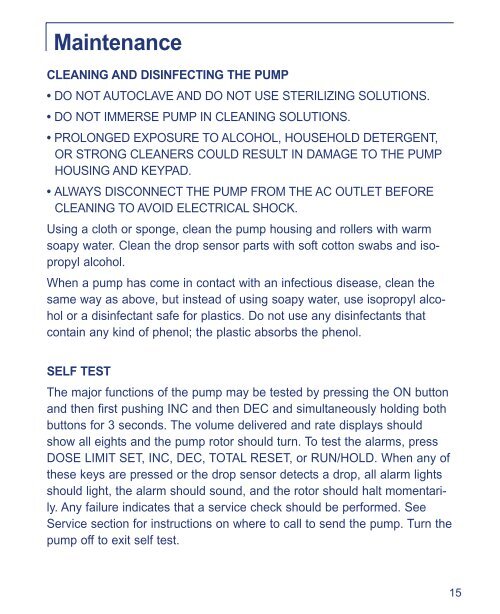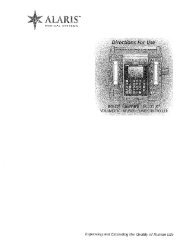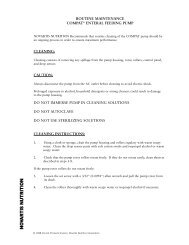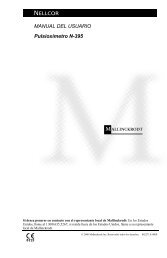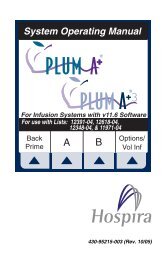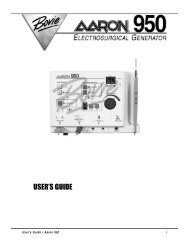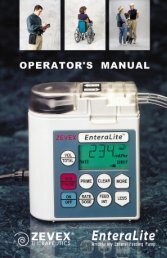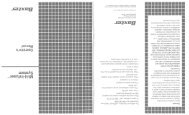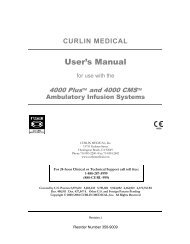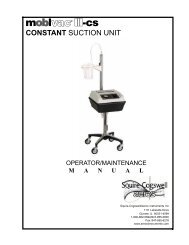2200 Enteral Feeding Pump
2200 Enteral Feeding Pump
2200 Enteral Feeding Pump
- No tags were found...
Create successful ePaper yourself
Turn your PDF publications into a flip-book with our unique Google optimized e-Paper software.
MaintenanceCLEANING AND DISINFECTING THE PUMP• DO NOT AUTOCLAVE AND DO NOT USE STERILIZING SOLUTIONS.• DO NOT IMMERSE PUMP IN CLEANING SOLUTIONS.• PROLONGED EXPOSURE TO ALCOHOL, HOUSEHOLD DETERGENT,OR STRONG CLEANERS COULD RESULT IN DAMAGE TO THE PUMPHOUSING AND KEYPAD.• ALWAYS DISCONNECT THE PUMP FROM THE AC OUTLET BEFORECLEANING TO AVOID ELECTRICAL SHOCK.Using a cloth or sponge, clean the pump housing and rollers with warmsoapy water. Clean the drop sensor parts with soft cotton swabs and isopropylalcohol.When a pump has come in contact with an infectious disease, clean thesame way as above, but instead of using soapy water, use isopropyl alcoholor a disinfectant safe for plastics. Do not use any disinfectants thatcontain any kind of phenol; the plastic absorbs the phenol.SELF TESTThe major functions of the pump may be tested by pressing the ON buttonand then first pushing INC and then DEC and simultaneously holding bothbuttons for 3 seconds. The volume delivered and rate displays shouldshow all eights and the pump rotor should turn. To test the alarms, pressDOSE LIMIT SET, INC, DEC, TOTAL RESET, or RUN/HOLD. When any ofthese keys are pressed or the drop sensor detects a drop, all alarm lightsshould light, the alarm should sound, and the rotor should halt momentarily.Any failure indicates that a service check should be performed. SeeService section for instructions on where to call to send the pump. Turn thepump off to exit self test.15


